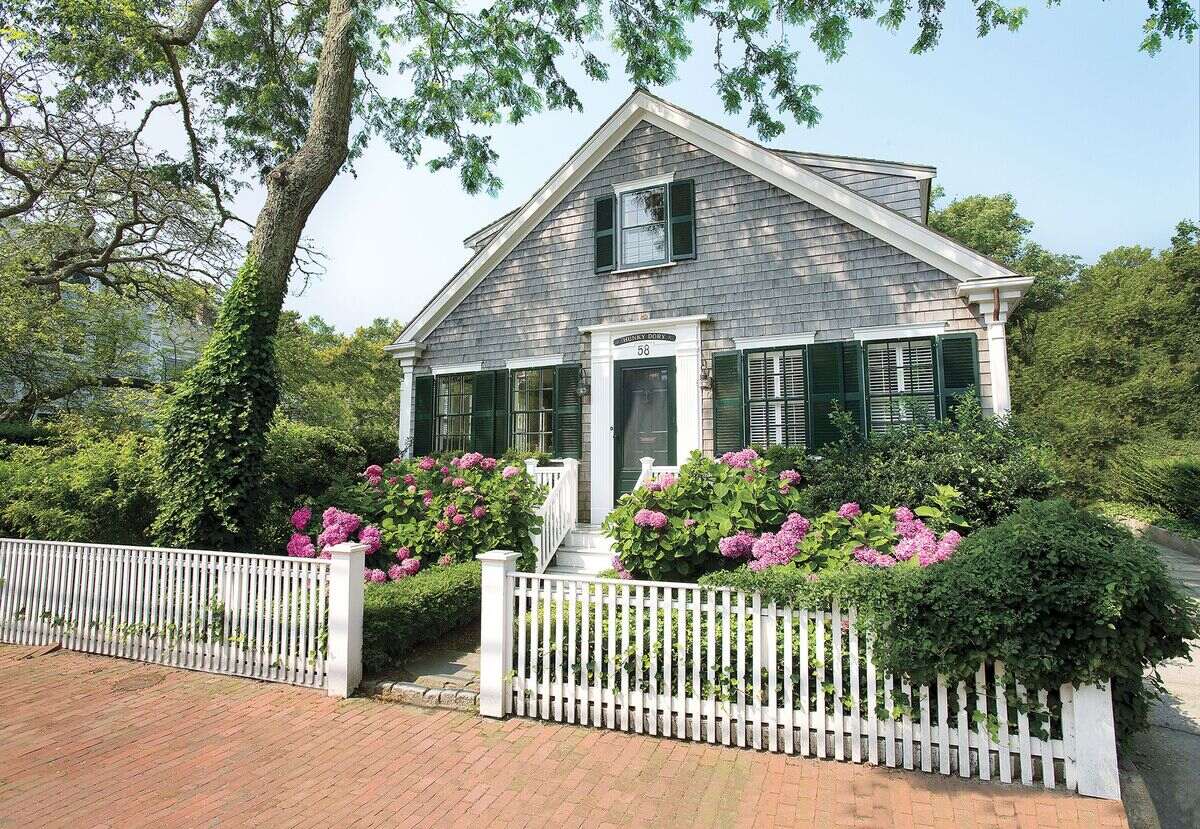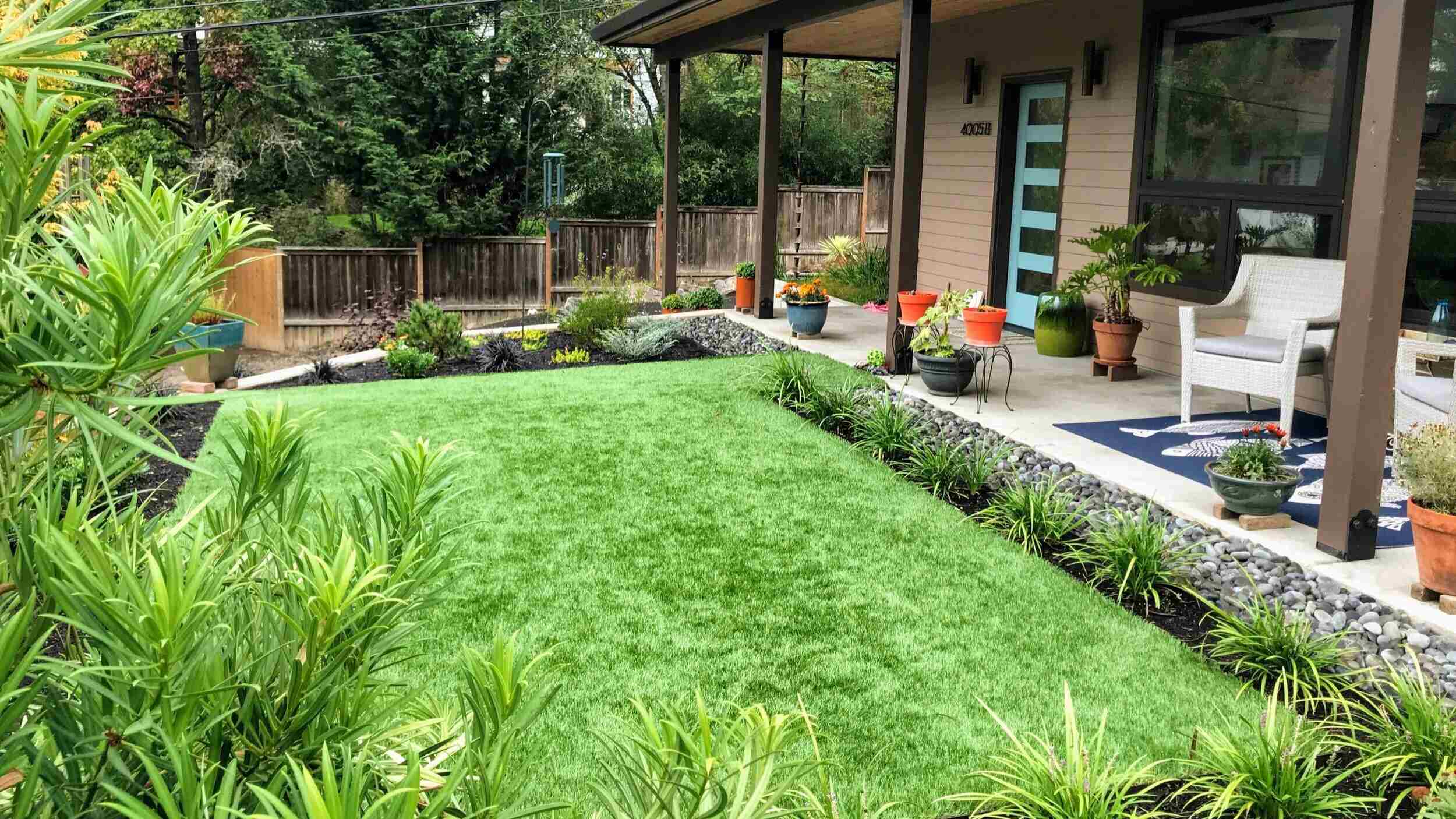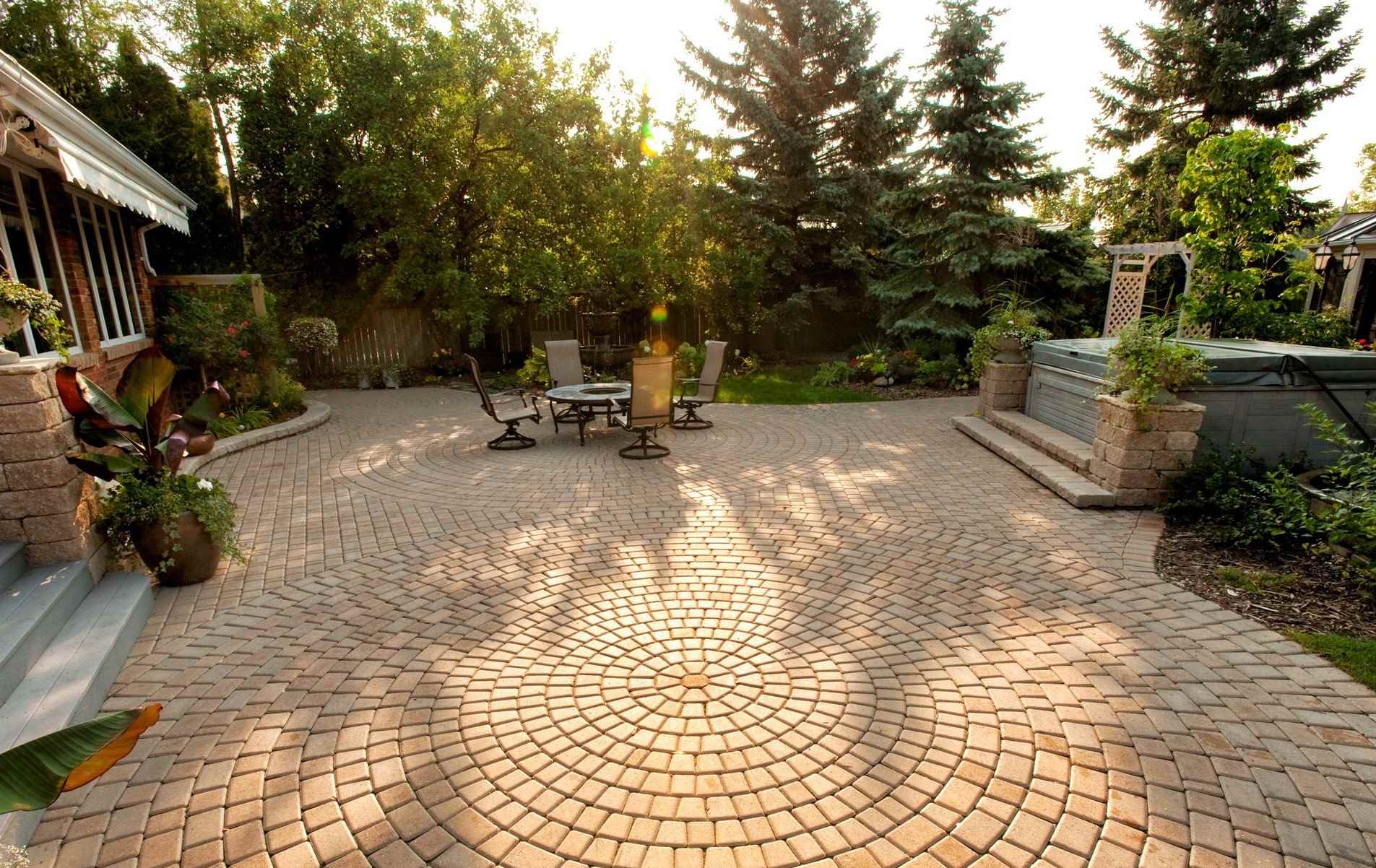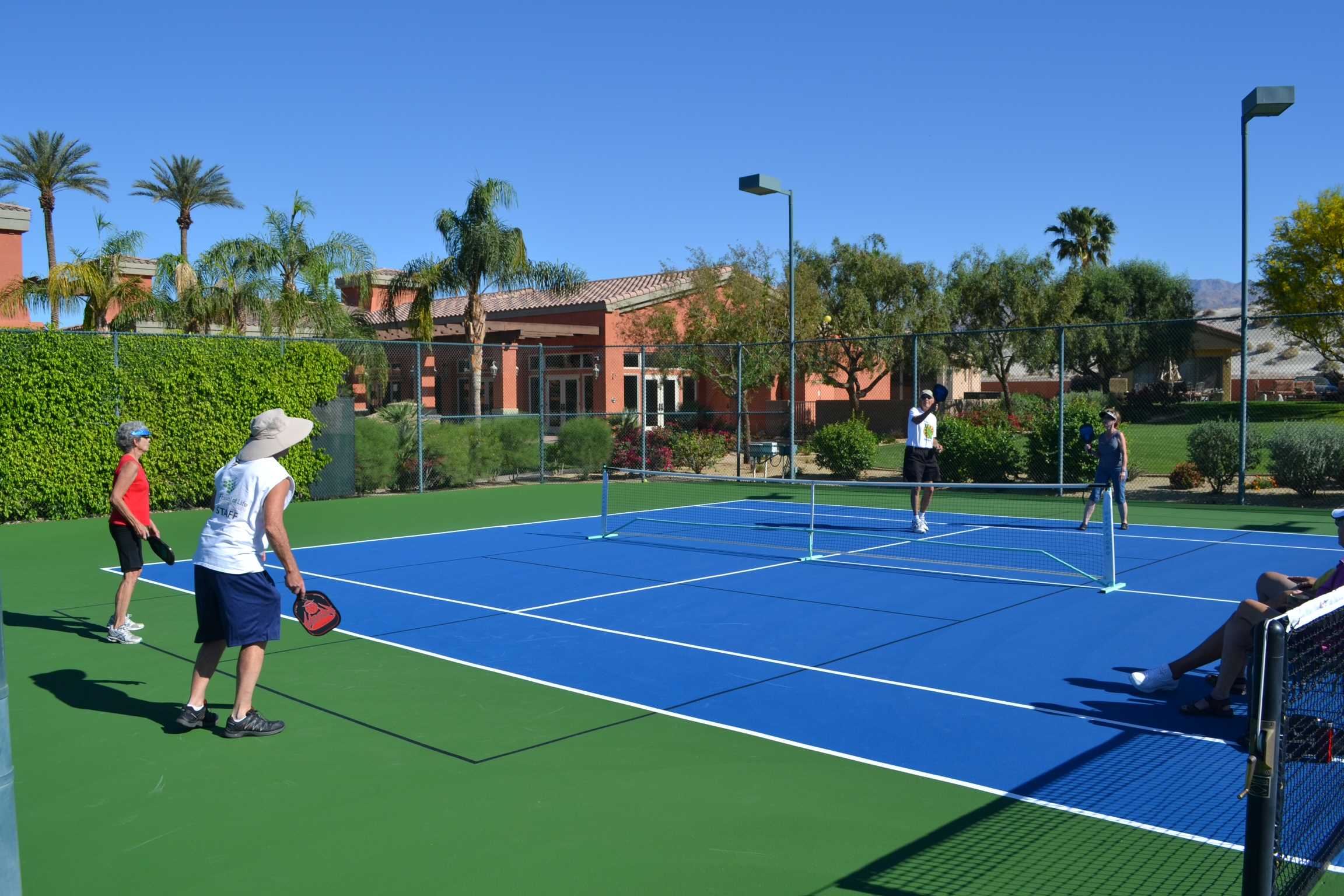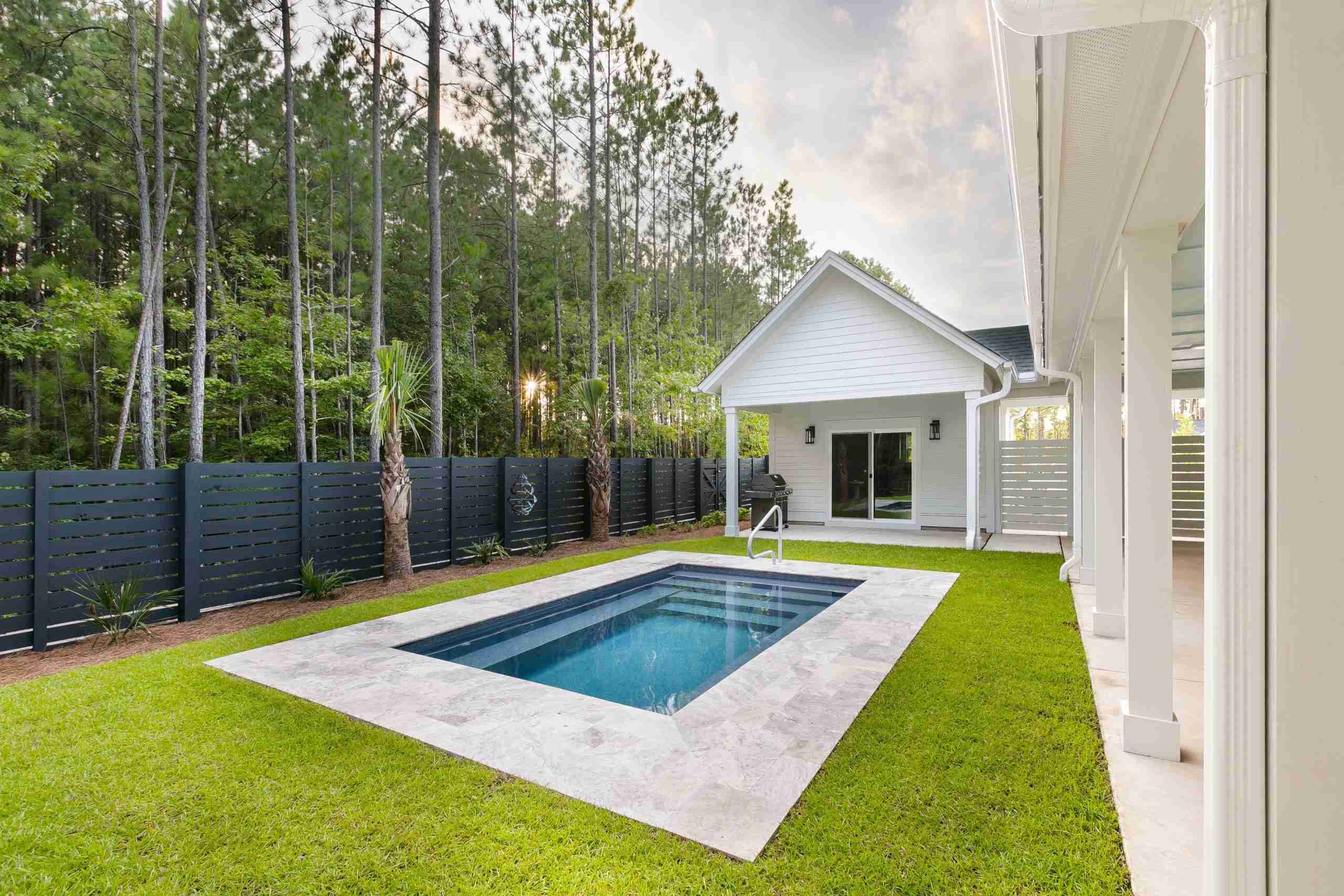Home>Garden Design>How Much To Fence A Backyard


Garden Design
How Much To Fence A Backyard
Published: August 5, 2023
Looking for landscape design inspiration? Discover how much it costs to fence your backyard and enhance your outdoor space. Trust our experts for a stunning transformation.
(Many of the links in this article redirect to a specific reviewed product. Your purchase of these products through affiliate links helps to generate commission for Chicagolandgardening.com, at no extra cost. Learn more)
Table of Contents
Introduction
Welcome to the world of landscaping, where creativity blooms and nature thrives. One of the key elements that can transform a backyard into a stunning outdoor oasis is a well-designed fence. Not only does a fence provide privacy and security, but it also adds aesthetic beauty to your landscape design. However, before embarking on your fencing journey, it’s essential to understand the factors that influence the cost of installing a fence in your backyard.
Whether you’re looking to enclose your backyard for practical reasons or purely for visual appeal, several factors come into play when determining the cost. Understanding these factors will help you make informed decisions about materials, styles, and installation methods, ensuring that you create the perfect backyard sanctuary within your budget.
From the type of material used to the length, height, and additional features of the fence, each element contributes to the overall cost. Additionally, factors such as the complexity of the design, labor costs, and the region where you reside can also impact the final price.
As you embark on this exciting journey, this article will provide you with a comprehensive guide on the various factors that influence the cost of backyard fencing. We will explore different types of fencing materials, average costs, additional considerations, and tips for saving money. By the end, you’ll have a clear understanding of the financial investment required to bring your backyard dreams to life.
Factors Affecting the Cost of Backyard Fencing
When it comes to installing a fence in your backyard, several factors can impact the overall cost. By understanding these factors, you can better plan your budget and make informed decisions. Here are the key factors to consider:
- Material: The type of material you choose for your fence greatly affects the cost. Options include wood, vinyl, aluminum, chain-link, and wrought iron. Each material has its own advantages, durability, and price range. While wood is a popular and affordable choice, vinyl and wrought iron tend to be more expensive.
- Size and Length: The size and length of your fence will impact the cost. A larger backyard will require more materials, resulting in higher costs. Additionally, if you decide on a taller fence for added privacy, be prepared for a higher expenditure.
- Style and Design: The style and design of your fence can also affect the cost. Intricate designs or custom patterns will require more labor and expertise, leading to higher installation costs. On the other hand, a simple, standard design will be more budget-friendly.
- Additional Features: Incorporating additional features such as gates, decorative accents, or landscaping elements will increase the overall cost. These add-ons not only provide functionality but also enhance the visual appeal of your fence and backyard.
- Location: Your geographical location plays a crucial role in determining the cost. Construction and labor costs can vary significantly from one region to another. Factors such as accessibility, local regulations, and permits can also impact the overall expenses.
Considering these factors, it’s essential to carefully assess your priorities and requirements before making a decision. Determine the purpose of your fence, the level of privacy you desire, and your preferred aesthetic. By evaluating these factors, you can strike a balance between your desired features and the budget you have allocated for your backyard fencing project.
Types of Fencing Materials
There are several different types of materials available for backyard fencing, each with its own unique characteristics and price points. Let’s explore some popular options:
- Wood: Wood fences are a classic choice, offering a natural and timeless look. They are versatile and can be customized to suit your preferred style. Wood fences are available in various types, including cedar, pine, and redwood, each with its own durability and price range.
- Vinyl: Vinyl fences are low maintenance and offer excellent durability. They are resistant to rot, decay, and insect damage, making them a popular choice for those seeking a long-lasting fencing option. Vinyl fences are available in a range of styles and colors, allowing you to achieve the desired aesthetic for your backyard.
- Aluminum: Aluminum fences are known for their strength, durability, and versatility. They can be easily customized to match your preferred style, from ornamental designs to modern and sleek options. While aluminum fences are not as private as some other materials, they offer a durable and low-maintenance fencing solution.
- Chain-Link: Chain-link fences are a cost-effective and practical option for many homeowners. They are durable, require minimal maintenance, and provide security without completely obstructing the view. While chain-link fences may not provide as much privacy as other materials, they are often used in residential settings for their affordability and functionality.
- Wrought Iron: Wrought iron fences exude elegance and sophistication. They are renowned for their durability and strength, providing security while adding a touch of luxury to your backyard. While wrought iron fences can be more expensive compared to other materials, they offer a timeless aesthetic and require minimal maintenance.
Each type of material has its own advantages and considerations in terms of maintenance, longevity, and cost. Consider your personal preferences, the purpose of your fence, and your budget when selecting the right material for your backyard fencing project. It’s also worth consulting with a professional landscape designer or fencing contractor to ensure you choose a material that suits your needs and complements your overall landscape design.
Average Cost of Different Types of Fences
The cost of installing a fence in your backyard can vary depending on the type of material you choose. Here is an overview of the average costs for different types of fences:
- Wood: On average, the cost of a wood fence can range from $1,500 to $4,500, depending on factors such as the type of wood, fence height, and length. For example, a cedar fence tends to be more expensive than a pine fence due to its durability and resistance to rot and decay.
- Vinyl: The average cost of a vinyl fence is around $3,500 to $7,500. Vinyl fences are generally more expensive upfront but require minimal maintenance in the long run. Factors such as fence height, length, and style can affect the overall cost.
- Aluminum: Aluminum fences have an average cost of $2,500 to $6,000. The actual price will depend on the height, length, style, and additional features. Keep in mind that ornamental or decorative aluminum fences tend to be more expensive than standard options.
- Chain-Link: Chain-link fences are the most affordable option, with an average cost ranging from $1,000 to $3,000. The cost will be influenced by factors such as fence height, length, and whether you choose additional features like privacy slats or vinyl coatings.
- Wrought Iron: Wrought iron fences are known for their elegance and durability, but they come at a higher price. The average cost for a wrought iron fence is approximately $4,500 to $9,000, depending on factors such as fence height, length, and complexity of the design.
It’s important to note that these are average costs and can vary depending on your specific location, the complexity of the installation, and any additional features you choose to include. Obtaining quotes from reputable fencing contractors is recommended to get a better understanding of the costs associated with your desired fence type and specifications.
Additional Costs to Consider
When budgeting for your backyard fencing project, it’s important to consider additional costs that may arise beyond the actual materials and installation. These additional expenses can impact the overall cost and should be taken into account. Here are some factors to consider:
- Permits and Regulations: Depending on your local regulations, you may need to obtain permits for the installation of your fence. These permits can come with associated fees, so it’s important to check with your local municipality to ensure compliance and factor in any additional costs.
- Removal and Disposal: If you have an existing fence or vegetation in the area where the new fence will be installed, you may incur costs related to the removal and disposal of these items. This can include labor fees or rental fees for equipment required to remove old fencing or clear the area.
- Accessories and Add-ons: Consider any additional accessories or add-ons you may want to include in your fence installation. This can include gates, decorative accents, lighting fixtures, or landscaping elements. These features can enhance the functionality and visual appeal of your fence but may come with an extra cost.
- Maintenance and Upkeep: It’s important to factor in the long-term maintenance and upkeep costs associated with your chosen material. Some fences may require regular staining or sealing, while others may need occasional repairs. Be sure to consider these ongoing costs to ensure your fence remains in good condition over time.
- Delivery and Transportation: If you choose to purchase your fencing materials from a supplier, there may be additional fees for delivery and transportation. This is especially true if you opt for bulk quantities or if the supplier is located far from your property.
By considering these additional costs and including them in your budget, you can ensure that you have a more accurate estimate of the total expenses involved in your backyard fencing project. It’s always wise to consult with a professional fencing contractor to get a better understanding of these costs and to receive expert advice on the best options for your specific needs.
DIY vs. Hiring a Professional
When it comes to installing a fence in your backyard, you may find yourself considering whether to tackle the project yourself or hire a professional. Both options have their advantages and drawbacks, and it’s important to weigh them carefully before making a decision.
DIY: Taking the do-it-yourself approach can be an appealing option for those with a limited budget and some experience in construction or home improvement projects. Here are some factors to consider:
- Cost Savings: DIY fencing can potentially save you money on labor costs. By purchasing the materials yourself and doing the installation, you can keep the expenses lower.
- Sense of Accomplishment: Successfully completing a DIY fence installation can bring a sense of pride and accomplishment. It can be a rewarding experience to see your hard work come to life in your backyard.
- Flexibility and Control: When you take on the project yourself, you have full control over the design, materials, and timeline. You can customize the fence to your exact specifications and work at your own pace.
However, there are also potential drawbacks to consider:
- Limited Expertise: If you’re not experienced in fence installation, there is a risk of making mistakes that could affect the durability and appearance of the fence. This could lead to additional costs for repairs or replacement.
- Time and Effort: Installing a fence can be a time-consuming and physically demanding task. It may require specialized tools and equipment, and you will need to dedicate a significant amount of time and effort to ensure proper installation.
- Potential Challenges: Depending on the complexity of the project and your specific landscape, you may encounter unexpected challenges that could prolong the installation or require additional expertise.
Hiring a Professional: Opting to hire a professional fencing contractor can offer several advantages:
- Expertise and Experience: Professional contractors have the necessary skills and experience to ensure a high-quality and durable fence installation. They are familiar with local regulations and best practices, minimizing the risk of mistakes.
- Efficiency and Time Savings: Professionals have the knowledge, tools, and manpower to complete the installation efficiently. This can save you time and allow you to enjoy your new fence sooner.
- Guarantees and Warranty: Many professional contractors offer warranties for their workmanship and may have access to superior materials. This provides added peace of mind and protection for your investment.
Of course, hiring a professional does come with potential downsides:
- Higher Costs: Hiring a professional will come with labor costs, which can significantly increase the overall cost of your fence installation.
- Limited Customization: While professionals can offer expertise, there may be limitations on customization options compared to doing it yourself.
- Less Control: When you hire a professional, you relinquish some control over the project’s timeline and execution. You will need to coordinate with the contractor and may need to compromise on certain aspects.
Ultimately, the decision between DIY and hiring a professional depends on your budget, level of expertise, and personal preferences. Be sure to carefully evaluate your skills, available time, and the complexity of the project before making a decision. Whichever route you choose, proper research and planning are key to ensuring a successful and satisfactory outcome for your backyard fencing project.
Tips for Saving Money on Backyard Fencing
Installing a fence in your backyard doesn’t have to break the bank. With some strategic planning and smart decision-making, you can save money on your fencing project without compromising on quality. Here are some tips to help you save money:
- Compare Quotes: Obtain multiple quotes from reputable fencing contractors to compare prices, materials, and services. This will ensure that you get the best value for your money. Be sure to request a detailed breakdown of costs, including labor and materials.
- Consider Alternative Materials: While wood and wrought iron fences can be beautiful, they are often more expensive. Consider alternative materials like vinyl or chain-link, which can offer similar functionality and aesthetics at a lower cost.
- Opt for Standard Designs: Intricate designs and custom patterns can significantly increase the cost of your fence. Choosing a standard design or a simpler style can help you stay within budget while still achieving an attractive and functional fence.
- DIY Some of the Work: If you have the necessary skills and tools, you can save money by taking on certain aspects of the fence installation yourself. However, be cautious and assess your abilities realistically to avoid costly mistakes that may require professional repairs later on.
- Consider Partial Fencing: If budget constraints are a concern, consider fencing only a portion of your backyard instead of the entire perimeter. This can help reduce both material and labor costs while still providing the desired functionality and aesthetics.
- Reuse or Repurpose Materials: If you have an existing fence that is still in good condition, you can save money by reusing some of the materials. Alternatively, consider repurposing materials from other sources, such as reclaimed wood or metal, to create a unique and cost-effective fence.
- Schedule Off-Peak Installations: Fencing contractors may offer lower prices during their off-peak seasons. By scheduling the installation during these periods, you may be able to secure better rates and potentially negotiate discounts.
- Maintain Your Fence: Proper maintenance and upkeep can extend the lifespan of your fence and reduce the need for costly repairs or replacements. Regularly inspect your fence, clean it as needed, and address any issues promptly to avoid bigger expenses down the line.
- Buy in Bulk: If you’re opting for a material like chain-link or vinyl, purchasing in bulk can often lead to cost savings. Consult with suppliers and inquire about discounts for buying larger quantities of materials.
- Shop Around for Materials: Don’t settle for the first supplier you come across. Take the time to shop around and compare prices from different suppliers for the materials you need. Look out for sales, promotions, or clearance items that can provide significant savings.
By implementing these money-saving tips, you can trim down the costs associated with your backyard fencing project. Remember, it’s important to strike a balance between cost and quality, ensuring that your fence meets your functional and aesthetic requirements while staying within your budget.
Conclusion
Installing a fence in your backyard is an investment that can enhance both the functionality and beauty of your outdoor space. By understanding the factors that affect the cost of backyard fencing and considering the different types of fencing materials available, you can make informed decisions that align with your budget and desired aesthetic.
When planning your backyard fencing project, it’s important to consider additional costs such as permits, removal, and maintenance. These costs can add up, so be sure to factor them into your budget to avoid any surprises along the way.
Deciding whether to take on the installation yourself or hire a professional is another key consideration. While DIY can save you money, it’s essential to balance your skills and expertise with the complexity of the project. Hiring a professional can ensure a high-quality and efficient installation but comes with additional costs.
To save money on your backyard fencing project, consider comparing quotes, exploring alternative materials, opting for standard designs, and reusing or repurposing materials. Additionally, scheduling off-peak installations, maintaining your fence, buying in bulk, and shopping around for materials can also help reduce costs without compromising on quality.
Remember, careful planning and research are crucial for a successful fencing project. Consult with fencing contractors or landscape designers to get expert advice and guidance tailored to your specific needs.
With these considerations and tips in mind, you can create a stunning and functional fence that transforms your backyard into a private and inviting outdoor sanctuary.

